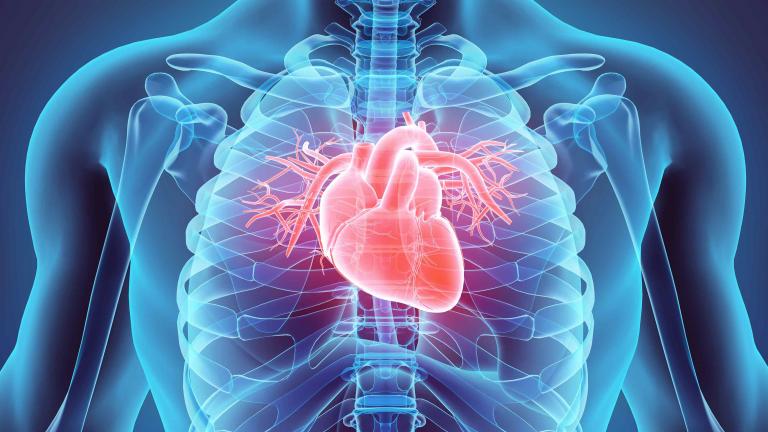The cardiovascular system (CVS) is the circulatory system consisting of the heart, blood vessels, and lymphatic vessels, which transports blood throughout the body. The CVS provides oxygen and nutrients to tissues and organs, helps to remove metabolic waste products, and regulates body temperature and pH. The CVS consists of three main parts: the heart, which pumps blood; the arteries, which carry blood away from the heart; and the veins, which return blood to the heart.
The human heart is a four-chambered muscular organ that pumps blood throughout the body via pulsatile contractions. The average adult human heart weighs about 300 grams (11 ounces) and beats at a rate of 70 beats per minute. Each heartbeat consists of a systole (contraction) followed by a diastole (relaxation). During systole, blood is pumped out of the ventricles into the arteries; during diastole, blood flows from the arteries into the ventricles. The valves between these chambers prevent backflow of blood.
The coronary arteries supply oxygenatedblood tothe myocardium (heart muscle). These arise fromthe leftand right main coronary arterieswhich branch offofthe ascendingaorta just abovethe aortic valve atthe baseofthorax(chest). They then course alongthe surfacesofthymusand great vesselsuntil they reachheart wherethey divide intoseveral smaller arterial branchesthat penetrate deepintoheart muscle supplyingitwithblood flow during bothsystolicand diastolic phasesofcardiac cycle. Myocardialischemia(reducedoxygen supplytoheart muscle tissue) resultsinangina pectoris(chest pain), whilemyocardialinfarction(death ofheart muscle tissue due to lackofoxygen supply) leads toacute myocardialinfarctionor “heart attack”.
Atherosclerosisis oneofthe leading causesofthese conditions because it narrows lumensofcoronaryarteries due toprogressive build-upoffatty deposits called “plaques” on their inner walls reducingblood flowtoheart muscle tissue beyond point whereitcan be compensated for by increasedoxygen demandduring physical activity or emotional stress causingmyocardialischemiaand potentially leadingtoa myocardialinfarctionif not treated in time. Other important risk factorsforatherosclerosisinclude high cholesterol levelsinthe bloodstream, hypertension(high blood pressure), diabetesmellitus as well as smoking cigarettes or using other tobacco products – allofthese increase likelihoodoffatty plaque buildup in coronariesarteries over time eventually narrowingthemtoapoint where they can no longer provide enough oxygenatedblood flowtothe myocardium during peak demand periods leadingtochest pain or evenHeart attacks if untreated long enough…


